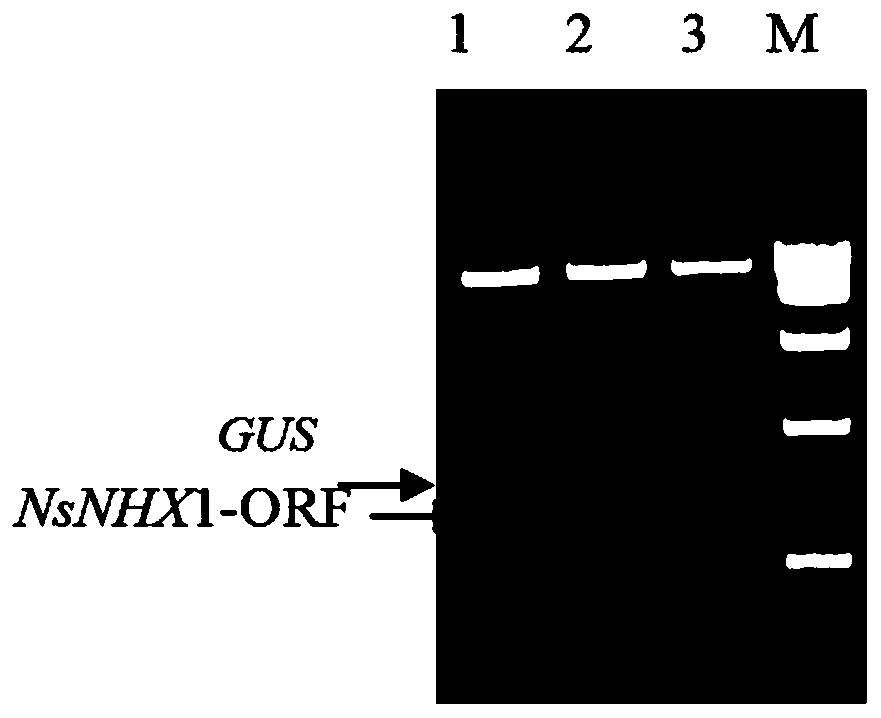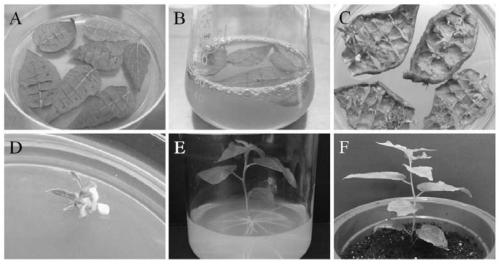Application of NsNHX1 protein and related biomaterials in breeding of reverse-resistant poplar
A protein and plant stress tolerance technology, applied in the biological field, can solve the problems of lack of development and research of antiporter genes
- Summary
- Abstract
- Description
- Claims
- Application Information
AI Technical Summary
Problems solved by technology
Method used
Image
Examples
Embodiment 1
[0113] Example 1, the acquisition of NsNHX1 Populus tomentosa and its stress tolerance analysis
[0114] 1. Acquisition of NsNHX1 Populus tomentosa
[0115] 1. Construction of recombinant vector
[0116] (1) Amplification of the target gene
[0117] According to Siberian Nitraria + / H + A pair of primers (NHX-pBI-F: 5'-GC TCTAGA ATGGATCAATTAAGTT-3', 5' includes XbaI recognition sequence; NHX-pBI-R: 5'-C GAGCTC TCACTGCCATTGGGGGAT-3', including the SacI recognition sequence at the 5' end), using the RNA of Nitraria sibirica Pall as a template, using NHX-pBI-F and NHX-pBI-R primers, using TaKaRa RNA PCR Kit (AMV) Ver. The 3.0 kit amplifies the NsNHX1 ORF region to obtain a PCR product. The reaction conditions are: 94°C for 3min; 94°C for 30s, 52°C for 30s, 72°C for 1min, 35cycles; 72°C for 5min. The electrophoresis results of the PCR products were as follows: figure 1 shown.
[0118] (2) The target gene is connected to the expression vector
[0119] The binary expres...
PUM
| Property | Measurement | Unit |
|---|---|---|
| diameter | aaaaa | aaaaa |
Abstract
Description
Claims
Application Information
 Login to View More
Login to View More - R&D
- Intellectual Property
- Life Sciences
- Materials
- Tech Scout
- Unparalleled Data Quality
- Higher Quality Content
- 60% Fewer Hallucinations
Browse by: Latest US Patents, China's latest patents, Technical Efficacy Thesaurus, Application Domain, Technology Topic, Popular Technical Reports.
© 2025 PatSnap. All rights reserved.Legal|Privacy policy|Modern Slavery Act Transparency Statement|Sitemap|About US| Contact US: help@patsnap.com



